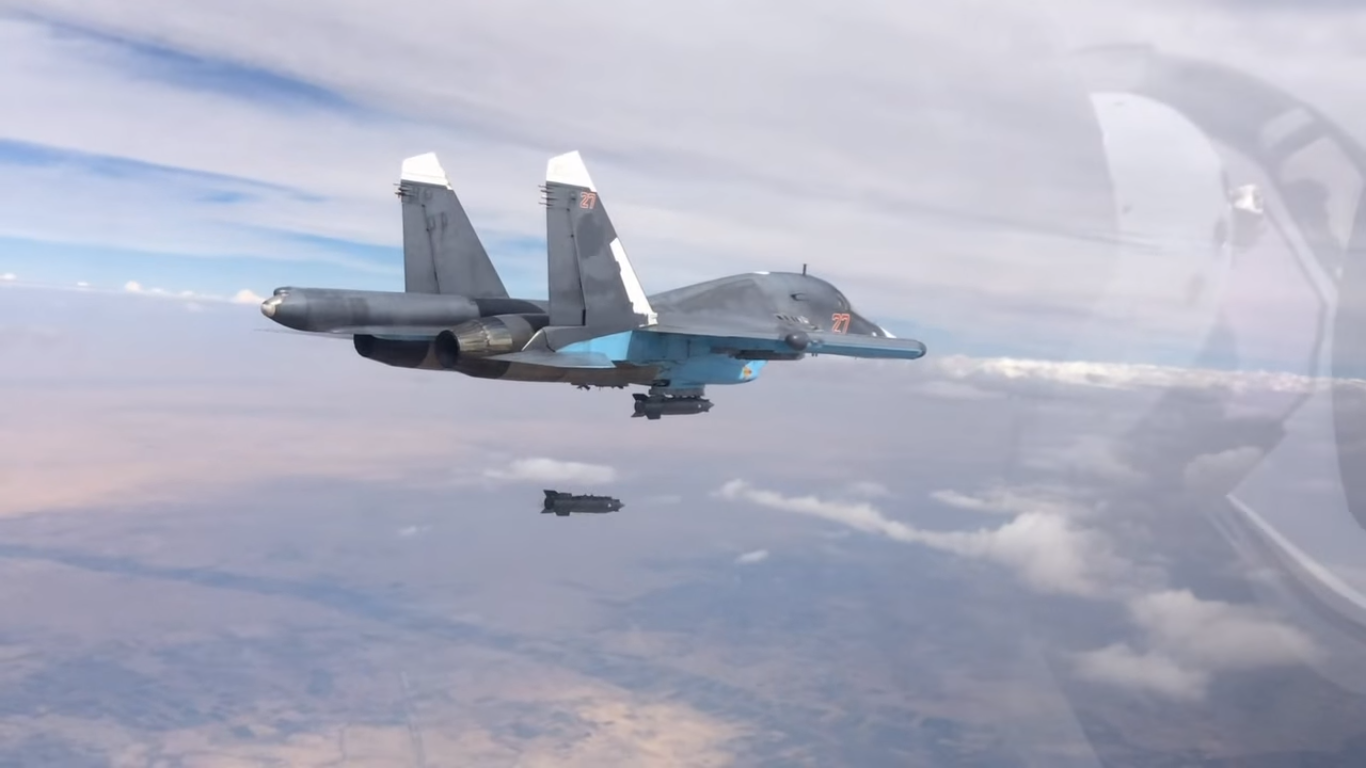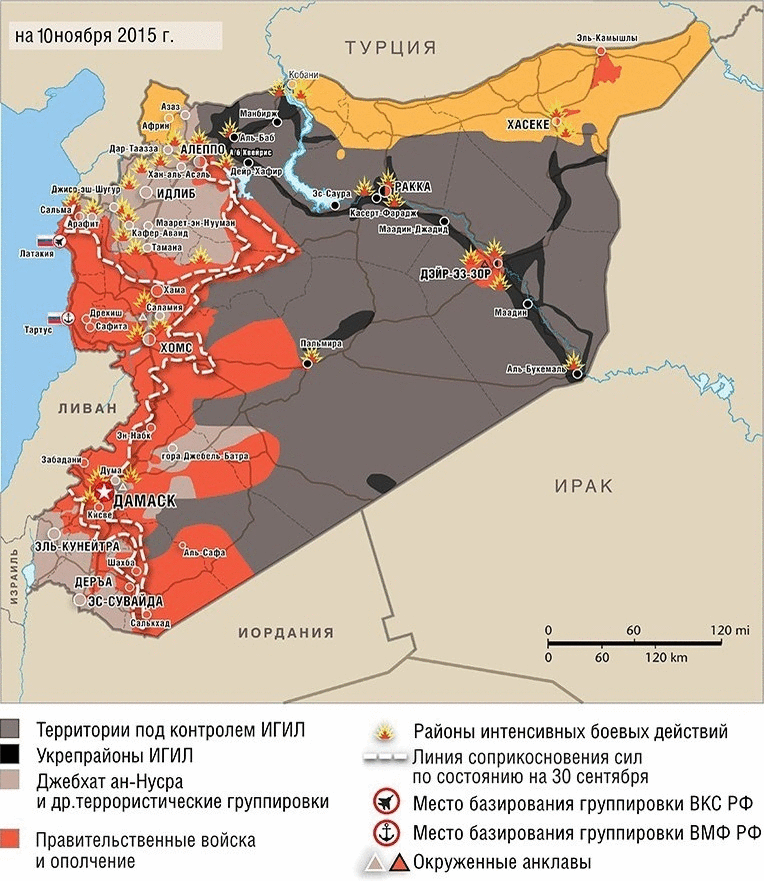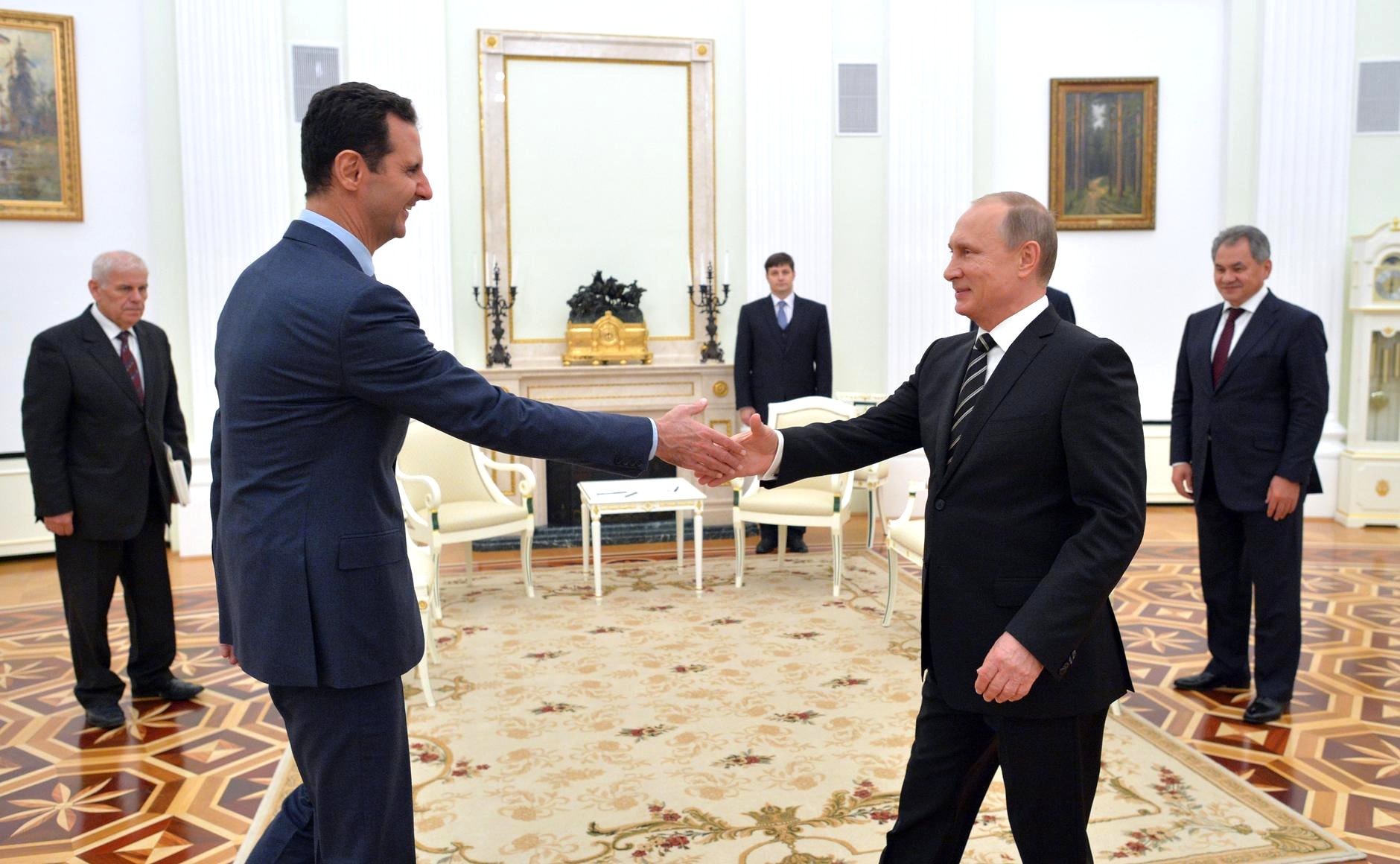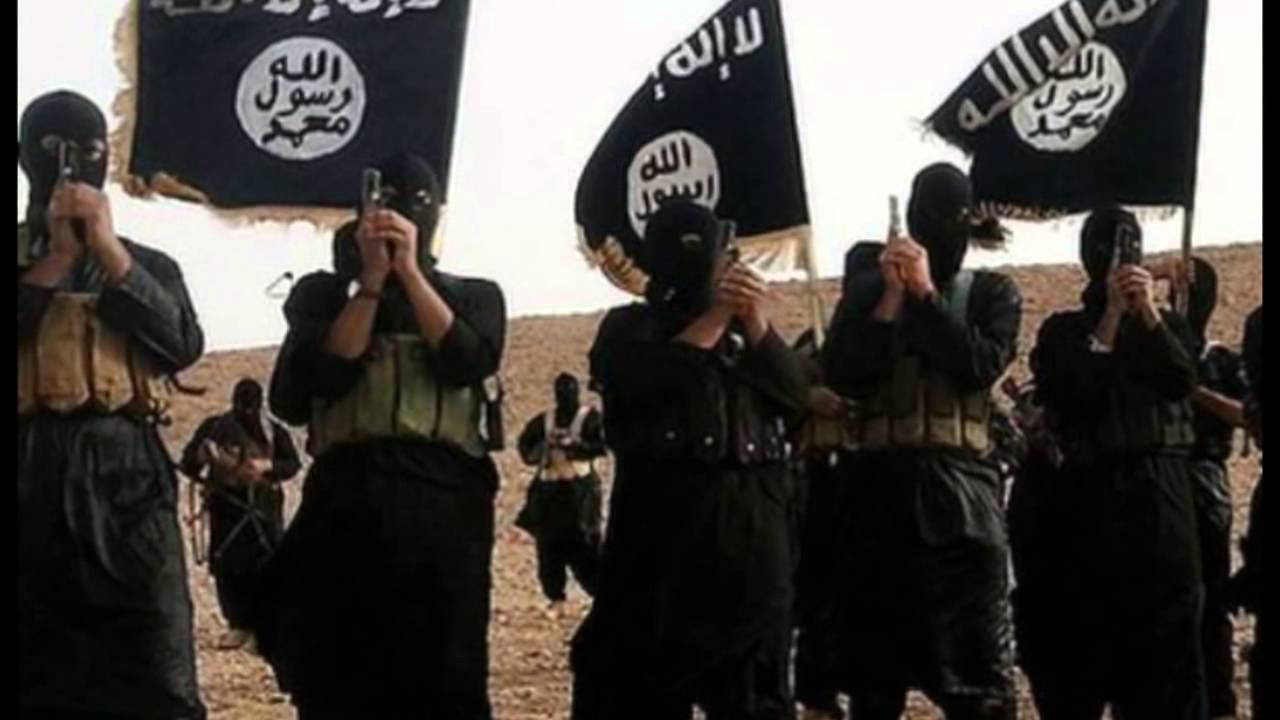
On Monday — less than half a year after Russia announced its intervention in Syria — President Vladimir Putin stated that beginning Tuesday, Russia would begin withdrawing “the main part” of its air forces from the country’s civil war.
The announcement preceded a phone call with U.S. President Barack Obama, in which Russia claimed that its withdrawal was part of a gesture intended to bolster the “start of a true peace process” with the resumption of talks in Geneva today. Yet this statement came on the heels of Foreign Minister Sergei Lavrov’s suggestion that Russia would be supporting the U.S.-led Coalition’s campaign against the Islamic State in Iraq and Syria (ISIS or ISIL) in Raqqa with its own assault on ISIS positions further south in Palmyra.
Even in announcing withdrawal, Putin also made clear that Russia would continue a “routine” military presence not only at the pre-war Tartus naval base, but also the Khmeimim air base purpose-built for its 2015 intervention. Yet while the scale and scope of this withdrawal remain to be seen, the announcement of the policy alone sends important signals about the evolving shape of Russia’s political and military commitment to the Bashar al Assad regime.
The logic of Russian intervention rested on striking an important balance between the need to shore up an embattled client state without succumbing to an unbounded commitment to its multi-sided civil war. The limits and tradeoffs of Russian resources and the preservation of Russian leverage both over the Assad regime and among the international parties to Syria’s civil war all suggest motivations for Russia’s withdrawal, but observers will need to carefully monitor the actions that follow Moscow’s words to better discern its Syrian strategy.
A Limited Tool For a Limited End

While Syria’s civil war is far from over, Russia’s declaration of a successful mission is not without merit.
Few observers expected Moscow would be able to seek more than limited objectives without risking a quagmire. But viewed against concerns about the regime suffering severe setbacks on the battlefield, and the prospect of emboldened supporters of the rebels invigorating their campaigns with an eye towards regime change, Russia’s intervention succeeded at stabilizing vulnerable fronts and dashing hopes of those who hoped for either a stronger rebel position at the negotiating table or an outright rout on the ground.
The vast majority of Russian resources were directed at shoring up regime positions and lines of communications against rebel forces in western Syria, including a dramatic effort to sever rebel lines of communication to their positions in eastern Aleppo city. But this should not be confused with an attempt to mount a full-scale recapture of key rebel positions even on select fronts.
While airpower made for the best propaganda and dealt damage to rebel positions and civilian populations, with the exception of the occasional use of strategic bombers, cruise missiles, and limited precision-guided munitions use, it mostly supplemented existing Syrian Arab Air Force capabilities.
While Russia’s other capabilities in Syria received less fanfare in Putin’s withdrawal pronouncements, the regime’s reversal of fortunes after its dismal summer owed much to Russia’s willingness to provide or directly operate heavy artillery, tanks and other armor, special operations, and their employment alongside a significant influx of Iranian-sponsored militiamen, have been just as important, if not more so, to replacing or buttressing regime ground capabilities that have suffered years of attrition to their hardware stocks and thousands of casualties.
Maintaining a high tempo of aerial sorties from purpose-built expeditionary bases was no mean feat for Russian Aerospace Forces, but it was a relatively bearable cost of relatively low risk, with relatively few airframes lost. But the kind of ground offensive that would be required to not just stabilize fronts and hold counteroffensive gains, but to fully claw back rebel positions in northwest or southern Syria would have so outmatched the regime’s available resources as to necessitate a much larger, and prolonged, Russian ground presence.
In the context of a limited offensive, the risk and cost of these ground deployments are manageable. But throwing Russian weight behind maximalist regime goals would require a large diversion of Russian ground forces and much higher risk of casualties at a time when fighting is intensifying in Moscow’s unresolved proxy conflict in Ukraine. The withdrawal announcement also comes soon after the biggest defense spending cuts announced under Putin, thanks to economic strain from low oil prices and sanctions over its invasion of Crimea. While Syrian intervention may not have been an immediately intolerable cost, present conditions make preventing it from growing into one wise.
Setting the Negotiating Table

While Russia’s campaign to support the regime did not decisively defeat the rebels, it denied many of Russia and the regime’s opponents a chance to seek a solution without Russian involvement or at the expense of key Russian interests.
Simply by occupying airspace over Syria, Russia made proposals for no-fly zones over key rebel turf exercises in bluster or awkward circumlocutions around the risk of great power war. Even with a significant reduction in Russian sorties over Syria, the maintenance of Russian military installations and their defenses could mean S-400/SA-21 surface-to-air missiles remain in Syria, which would be a key threat for any Suppression of Enemy Air Defense (SEAD) efforts that would precede an extended air campaign against regime targets. Not only that, but the reduction in aerial activity against rebel targets in the northwest would also vastly reduce the risk of a military crisis with Turkey, such as the one which broke out when Turkey downed a Russian Su-24 that violated its airspace. The location of Kheimim airbase means that, should the need arise, Russia could quickly surge air or ground forces to respond to rapid rebel gains in the northwest.
Meanwhile, Russia has increasingly provided support to the Kurdish People’s Defense Units
(YPG) as it seeks to unify its lines across the Turkish border, a major setback to Turkey and the rebels dependent on supply lines from it. With its leftist ideological origins, frequent clashes with Islamist and secular Arab rebel groups, and pragmatic approach towards a regime whose priorities rate Kurdish areas in Syria lowly make it a willing recipient of Russian aid. The more powerful the YPG, the more divided Turkey’s efforts become, especially as militancy and repression in the Turkish-Kurdish conflict intensify at home. The less Turkish and Arab opposition control over the border, the harder it becomes for rebel groups in the northwest to receive support from their foreign patrons. If nothing else, Russia has removed several popular anti-regime intervention options from the table and severely constrained the possibilities of several others.
But making this durable and reducing the risks of increased costs through escalation requires providing an alternative, and in this sense, Russian force has shaped the conditions favorably for a diplomatic gambit to preserve its client and influence in Syria. Despite the incomplete nature and numerous violations of the February 27 ceasefire, it represents a de-escalation that has left UN envoy Staffan de Mistura and other negotiators cautiously optimistic. Combining that step with a nominal withdrawal could help ease Russian rivals into supporting negotiations, with starting terms on the ground vastly more favorable to Russian interests than before the intervention. Not only that, de-escalation may already be playing havoc with rebel political-military cohesion. Jabhat al-Nusra, a group that has expanded its power and influence, and found begrudging collaborators from military necessity, has opened a conflict with the Free Syrian Army’s 13th Division. This continues a pattern of Jabhat al-Nusra seeking to batter and plunder recipients of Western military support intended to be bulwarks against jihadism into compliance, but de-escalation has undermined the influence it claimed through the successes of battlefield coalitions. Any break or reduction in power of the more uncompromising jihadist groups bodes better for a settlement favorable to Russian interests.
Withdrawal goes beyond a good faith gesture to opponents, though, it also sends a signal to the Assad regime that Russian support is not unlimited. Like all great powers supporting embattled clients, Moscow faces a principal-agent problem with its client in Damascus. Unconditional Russian support would encourage Damascus to seek unrealistic goals, squandering Russian blood and treasure on costly campaigns in territory unattainable to Syria on its own. Many in the regime are tempted to de-escalation as a strategic pause to exploit rebel setbacks, and frequent ceasefire violations suggest the fragility of the arrangement. If Russia cannot limit the extent of regime provocations, its hopes for reducing the costs of its military commitment and achieving a favorable negotiation outcome (with all the attendant great power prestige it would impart) will be dashed by the ceasefire’s full collapse and the possibility of rebel patrons escalating their support.
Russia seeks to secure the Syrian state, but it must prevent the ruling clique’s ambitions from leading the state to its own destruction. Russian officials have publicly chastened the Assad regime for public bluster in defiance of Russia’s negotiated objectives, and Assad’s “chilly” receptions in Moscow are accompanied by allegations Russia has sought unsuccessfully to secure a replacement more amenable to negotiation.
While Iran and Russia have overlapping interests and coordinated their military actions, Iran’s experience with sustaining networks of sectarian militias give it a fallback option for proxies that might survive state collapse, their ideological and criminal tendencies make them less desirable to Russia, which was rumored to seek the reassertion of Syrian state control over them. These concerns make checking the erosion of the Syrian state through prolonged war more urgent for Russia than Assad’s other sponsors in Tehran, but may also limit the extent to which Russia can disengage from the Syrian conflict.
In this sense, reducing operations against rebel groups but retaining a presence in Syrian bases may provide reassurance to the regime that Russia will safeguard it if a collapse of the peace process results in rebel offensives while scaling back operations that might encourage the regime to do away with the peace process itself.
ISIS and Unfinished Business

While Russia’s intervention and the logic of its diplomacy has consistently demonstrated the priority of the balance between the regime and rebels, the question of Russia’s exaggerated but still considerable campaign against ISIS remains an important factor in how withdrawal might proceed. Lavrov’s discussion of putting pressure on ISIS from the south in Palmyra is not empty rhetoric. While the majority of Russian aerial sorties targeted rebel-held territories, Russian supported regime campaigns to relieve Kweris airbase from ISIS siege in Aleppo and guard the main supply route to Aleppo against ISIS’s frequent cuts, while also supporting the regime pocket in Deir Ezzor and attacking ISIS-held Palmyra. Despite the high place of ISIS in Russian rhetoric at the intervention’s beginning, the ceasefire put more scrutiny on bombing rebel targets and freed up aircraft for Russia focus its airpower on ISIS targets.
While Russia has helped retake territory from ISIS in some areas, in others its bombing of rebel groups resulted in ISIS gains on adjacent fronts. In a multi-sided civil war, ISIS spoiling advances by rebels, the regime and Russia’s main targets, can be an acceptable or welcome outcome, and ISIS is happy to exploit regime-rebel fighting for its own advances against both. As the ceasefire does not encompass ISIS, the ceasefire does not directly secure the regime against it. Nor can Russia claim the same kind of rhetorical or practical victory over ISIS when it has not conceded to the peace process, and ISIS many incentives to tout Russian withdrawal as its victory over a major power’s stated attempts to crush it.
Russia has long employed fixed and rotary-wing airstrikes and artillery in support of Syiran operations in the vicinity of Palmyra. Towards the end of 2015, Russia supplemented this with naval infantry, and in 2016 footage has emerged of the formidable TOS-1A multiple-launch rocket system attacking ISIS targets in the area. Given how recently regime and Russian forces have prepared for an offensive on Palmyra, it seems probable it will play out. Scaling down Russian operations to targeting ISIS in Palmyra, Deir Ezzor, and perhaps the approaches to Aleppo could be sustained without the full Russian expeditionary force, allowing Russia to both meet its claims of scaling down operations to fit the post-ceasefire tempo without ending participation in a potentially reputation-burnishing and cooperation-eliciting campaign.
Given tensions between Syrian Kurds and major rebel groups and their sponsors, Lavrov’s discussion of a push from the north on Raqqa and from the south on Palmyra would serve Russian and regime interests well. The gains from such an offensive would accrue largely to the regime and YPG, and weakening ISIS in eastern Syria might give the YPG more freedom of action to expand its competition with rebel forces. Given the greater likelihood that the YPG could accommodate Damascus’s interests in eastern Syria than ISIS or rebel groups, currying favor through supporting the YPG’s anti-ISIS efforts suggests additional benefits to a sustained Russian campaign in this area.
It will be easier to assess the relevant salience of resource constraints and diplomatic motives for Russia’s withdrawal announcement as the actual implementation and the regime’s reaction to it unfolds. A fast and relatively larger withdrawal of resources would suggest the importance of resource constraints, or resource tradeoffs if further escalation follows in Ukraine or other theaters of military importance to Russia.
A reduced profile for Russian forces but relatively limited relocation would highlight the diplomatic signaling aspects, while the measure of its effect on Assad concessions to Russian interests will be more apparent in its approach to the ceasefire and reaction to developments in peace talks. Regardless, the announcement does not lend itself to a monocausal explanation.
As for its success, there are many potential spoilers for a deftly-managed negotiation that preserves the Syrian state. Inter-rebel competition could drive some groups back to the battlefield to undermine rivals that benefit from peace. A tenacious ISIS defense could drag out that aspect of war longer than Moscow prefers. The Assad regime may not fall in line with Russian objectives and try to bring Russia back to the battlefield. As U.S. observers should know, a graceful withdrawal from a foreign civil war is much more easily announced than accomplished.





